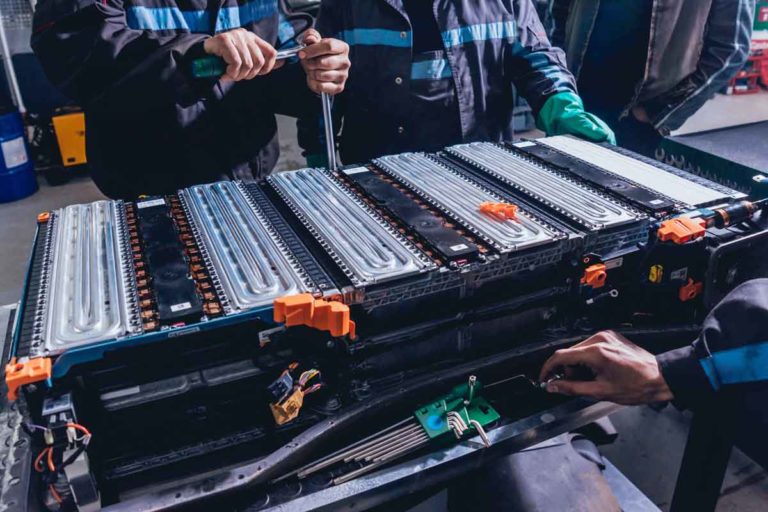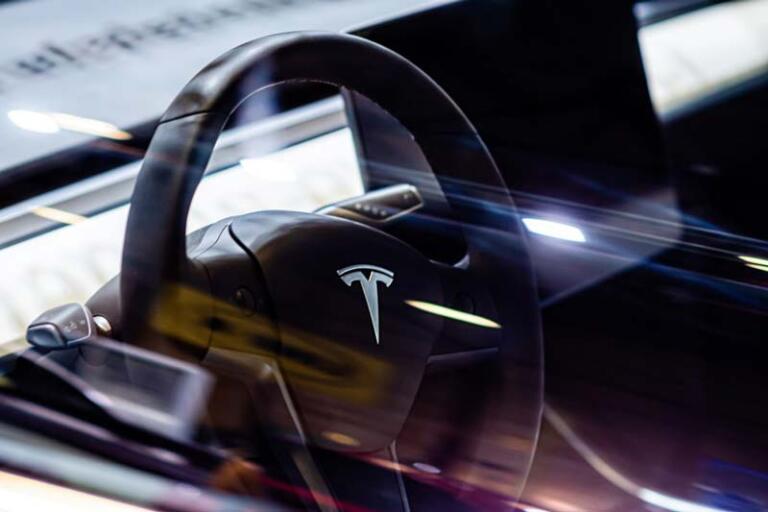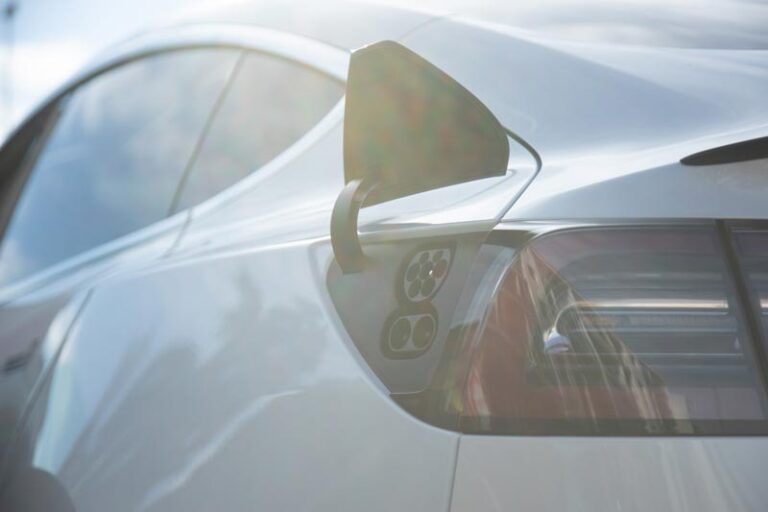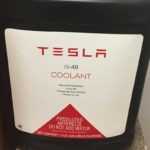The aftermarket value for Teslas is on an all-time high, and people are jumping the queue to buy used Teslas. Many are wondering if it is worth doing so and how much used Teslas are worth, compared to new Teslas. Does mileage matter as much with a Tesla?
Miles do not matter as much with a Tesla when compared to an ICE car. Teslas have a very good resale value and retain almost 90% of their value after about 3 years of ownership. With way fewer parts, service and maintenance costs are substantially lower when compared to ICE vehicles.
So, does mileage matter on a Tesla? Miles still matter to some degree. Check out the rest of the article where I make comparisons with ICE and other EVs.
- Why Miles Don’t Matter as Much on a Tesla as They Do on a Regular ICE Vehicle
- Why Miles Can Still Matter on a Tesla
- How Tesla Mileage Is Connected To Its Value
- Summary: How Do Teslas Compare To Traditional ICE Cars In Terms Of Resale Value?
- Frequently Asked Questions
Why Miles Don’t Matter as Much on a Tesla as They Do on a Regular ICE Vehicle
I want to start off by saying that miles still do tell a lot about a vehicle’s condition, whether electric or not. However, the accuracy with which you can gauge a car’s state by judging its mileage is a lot higher when talking about a fuel-powered model. Here’s why:
Teslas (and other EVs) are, mechanically speaking, simpler than their ICE counterparts. In fact, according to Financial Express, they comprise roughly 60% fewer components than traditional vehicles. As a result, there’s just less to go wrong with, in general.
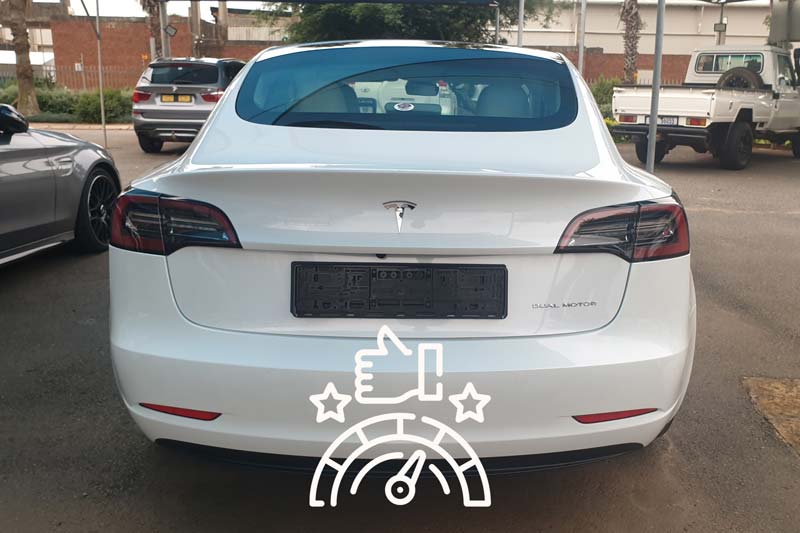
Therefore, I’d argue that battery condition is a much better criterion than brute mileage to use for a Tesla evaluation. Luckily, according to Inverse, Teslas can retain up to 90% of their battery capacity after 200,000 miles (321,869 km) of use.
How Can I Estimate My Tesla’s Battery Capacity As Its Mileage Increases?
While it’s an estimation, you can refer to a table that demonstrates how Tesla’s battery capacity decreases as mileage increases. This helps illustrate the impact of mileage on battery health.
In the following table, I’ll take you through some rough estimations of your Tesla’s battery capacity as its mileage grows. Keep in mind that these are just that, estimations, so take them with a grain of salt.
| Tesla Battery Capacity Retention | |
| Mileage | Battery Capacity |
| 0 | 100% |
| 6500 miles (10,460 km) | 98% |
| 37,300 miles (60,000 km) | 95% |
| 74,500 miles (120,000 km) | 94% |
| 105,600 miles (170,000 km) | 93% |
| 131,000 miles (210,800 km) | 92% |
| 170,000 miles (273,500 km) | 91% |
| 200,000 miles (321,800 km) | 90% |
This goes to show that the same mileage that would indicate a significant performance decrease in an ICE vehicle doesn’t hold as much weight when it comes to a Tesla.
In my opinion, the weakest link in an ICE vehicle’s powertrain is its engine. Their motors keep vibrating more with each covered mile, and you pay the price of them wearing themselves and other adjacent components out.
With EVs, you won’t ever have to worry about this type of problem, which is why their mileage really doesn’t say a lot in the grand scheme of things.
In conclusion, Teslas don’t wear out as quickly as ICE cars due to two reasons:
- They comprise fewer components in general. Fewer moving parts reduce the overall probability of a malfunction.
- They don’t feature a combustion engine, which is a weak link in a car’s powertrain, wearing itself and adjacent components out as mileage grows.
Tesla vs. Other EVs
I’ve already established the reasons why Teslas are generally more durable than most of their ICE counterparts. However, is this the case with other EV vehicles as well?
The (disappointing) answer is: that it depends. Given that the mainstream success of EV vehicles is still fairly new, there’s just not enough data and research to conclude which model or brand lasts the longest.
My take on the question is that, as with everything, you get what you pay for. While with Tesla or other higher-end brands, you’ll be able to retain impressive battery capacity even at higher mileages, cheaper options might not be as durable.
Why Miles Can Still Matter on a Tesla
So mileage does matter? Well, the answer is yes and no.
Before expanding on the topic even further, I want to first clarify that the context in which the word “doesn’t matter” is used in this article can affect the validity of my claim. If you’re simply examining your car’s mileage out of curiosity and have no intention of selling it, then what I just said remains true.
However, if you’re planning to sell and are trying to determine your Tesla’s resale value, the topic becomes a bit more complicated. A used car’s mileage always matters.
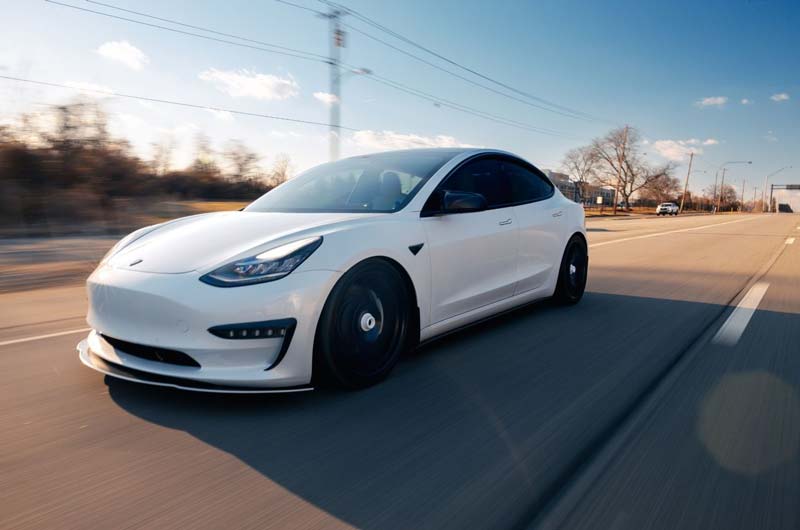
Do miles matter on a Tesla? In the context of a resale situation, Tesla mileage matters, always has, and probably always will.
Moreover, even though a high mileage doesn’t matter as much on a Tesla as it does with an ICE vehicle, it can still indicate a few issues within the car’s components, which can affect a resale price.
Although Teslas don’t have a combustion engine, they still feature parts that are bound to wear out with excessive use like:
- Steering components
- Breaks
- Shock absorbers
- Springs
- Steel body parts
And at the end of the day, a top-notch-performing battery won’t really make up for the fact that your brakes don’t work as well anymore.
While it’s true that as long as you perform frequent maintenance checks, these types of problems shouldn’t be much of an issue, they should still be something to consider while evaluating your Tesla’s condition.
Check out this article where I discuss the Tesla braking system in detail, how to effectively use it, how regen braking increases longevity, and how to get the most out of your brakes.
Here’s a more in-depth YouTube video explaining how to best maintain Tesla brakes:
How Tesla Mileage Is Connected To Its Value
Teslas are renowned for their ability to retain their worth even after years of use. The Vehicle Suggest website estimates that the Model 3 might be able to keep as much as 90% of its original value after three years of ownership. Therefore, it’s safe to say that Teslas hold their value much better than other types of vehicles.
How Many Miles Is A Tesla Good For?
However, after reaching the ~70,000 miles (112,600 km) mark, Teslas will inevitably start to depreciate. As the mileage approaches 100,000 to 200,000 miles (161,000 to 321,800 km), it really starts to take a toll on the vehicle’s worth.
If you’re still on the original battery pack, you can usually expect to drive your Tesla anywhere between 300,000 to 500,000 miles (482,800 to 804,670 km). However, by this point, the resell value should be pretty much depleted.
Keep in mind that these numbers are just an estimate. We don’t see many Teslas with that sort of mileage (yet – most miles on a Tesla are yet to be driven!), so it’s hard to know.
Your Tesla’s longevity and resell value will depend on a wide range of variables, including your maintenance schedule, the types of roads you most often drive on, and sometimes just pure luck.
Summary: How Do Teslas Compare To Traditional ICE Cars In Terms Of Resale Value?
Teslas and traditional internal combustion engine (ICE) cars have distinct differences when it comes to resale value. Teslas have been demonstrating an impressive ability to retain their value compared to their ICE counterparts. Here’s a more extensive look at the comparison:
Resale Value Trends:
Teslas have shown a tendency to hold their value better than many ICE cars. Over a 3-year ownership period, a Tesla can retain up to 90% of its initial value, while ICE cars typically experience more significant depreciation during the same timeframe.
Factors Driving Resale Value:
Simplicity of Design:
Teslas have a mechanical advantage due to their simpler design. With fewer moving parts, the potential for wear and tear is reduced, contributing to a more robust vehicle condition over time.
Lower Maintenance Costs:
ICE cars require complex engine components and regular maintenance, which can be costly. In contrast, Teslas have fewer components that can degrade, leading to reduced maintenance expenses.
Reduced Depreciation Factors:
Traditional ICE vehicles often suffer from higher depreciation due to concerns about engine performance, mechanical wear, and changing emission standards. Teslas, being electric and unaffected by emissions regulations, do not experience the same depreciation pressures related to engine technology.
Market Perception:
Teslas benefit from positive market perceptions as pioneering electric vehicles. Their reputation for innovation and cutting-edge technology adds to their appeal, contributing to sustained demand and, consequently, better resale values.
Evolving Market Dynamics:
As electric vehicle technology becomes more mainstream and established, the resale value gap between Teslas and ICE cars could continue to widen. Consumers are increasingly considering the long-term benefits of electric vehicles, further enhancing the attractiveness of Teslas in the used car market.
Potential for Future Regulations:
With growing environmental awareness and stricter emissions regulations, ICE cars could face increased restrictions in certain regions. This could lead to faster depreciation for ICE vehicles, while Teslas maintain their value due to their emission-free nature.
Technology and Software Updates:
Teslas often receive over-the-air software updates that enhance their features, improve performance, and even extend battery life. These updates can help maintain the overall value of the vehicle.
In conclusion, you’re more likely to get a good resale price for a Tesla than traditional ICE cars due to their simplified design, lower maintenance costs, positive market perception, and their alignment with future trends favoring electric mobility.
This advantage is expected to persist as electric vehicle technology matures and becomes more mainstream, making Teslas a favorable choice for those looking to minimize depreciation and retain a higher value over time.
Should I Focus On Battery Condition Or Mileage When Evaluating A Used Tesla’s Value?
When it comes to evaluating a used Tesla’s value, prioritizing battery condition over mileage is a wise approach. Teslas, as electric vehicles, have unique characteristics that set them apart from traditional internal combustion engine (ICE) cars. Here’s a more comprehensive explanation of why battery condition takes precedence over mileage:
Battery’s Central Role:
The battery is the heart of an electric vehicle, including a Tesla. It directly impacts the car’s performance, range, and overall longevity. Therefore, assessing the battery’s health is paramount in determining the vehicle’s future value and capabilities.
Retained Capacity:
Teslas are designed to have remarkable battery longevity. Even after traveling about 200,000 miles, they can still retain up to 90% of their original battery capacity. This means that, despite significant mileage, the battery’s performance remains relatively strong, ensuring extended use and value retention.
Decoupling from Engine Wear:
Unlike traditional ICE cars, where the engine’s mechanical components wear out over time, Teslas lack a complex internal combustion engine. This means that mileage has a different impact; the electric motor and drivetrain experience significantly less wear, allowing the vehicle to maintain a higher level of performance despite covering substantial distances.
Long-Lasting Performance:
A well-maintained Tesla with a healthy battery can offer excellent performance and range even after extensive use. This long-lasting performance contributes to the vehicle’s resale value, as potential buyers are willing to invest in a used Tesla that can still deliver the expected driving experience.
Battery Health Indicators:
Teslas come equipped with sophisticated battery management systems that provide insights into the battery’s health and performance.
Before purchasing a used Tesla, you can request a battery health report from the seller or a Tesla service center. This report can give you valuable information about the battery’s current capacity, charging history, and any signs of degradation.
Future-Proofing:
As the electric vehicle market evolves, battery technology continues to improve. Teslas with healthy batteries stand a better chance of benefiting from future software updates and advancements in battery management, potentially enhancing their value over time.
Resale and Trade-In Value:
A Tesla with a well-maintained battery is likely to fetch a higher resale or trade-in value, as buyers and dealers recognize the importance of a functional battery in an electric vehicle.
This is why the answer to the question, “Does Tesla mileage matter?” is yes at the end of the day.
Frequently Asked Questions
What Is Considered High Mileage for a Tesla?
How Many Miles Will a Tesla Last?
Check out these 20 great gift ideas for yourself or a Tesla fanboy.
Contact Us if you have any questions or queries.


